There are two schools of thought surrounding the Civic Type R. On one hand, there are those who believe it’s the pinnacle of Honda’s engineering achievement—a technical tour-de-force built with the very best that a carmaker could offer. On the other, there are skeptics who think a front-wheel-drive sports sedan can’t be better than an all-wheel drive one. Heading into this track experience, I belonged squarely to the latter. But an afternoon at the Clark International Speedway was enough to sway my convictions—the hype is most definitely real.
Admittedly, I don’t find the Honda Civic Type R to be a pretty machine. With all those protrusions, vents, and wings, it looks menacing and aggressive, but messy and complicated at the same time. However, after knowing that everything here serves a purpose makes me appreciate all the meticulous attention to detail. Aerodynamics play a big part of its looks: the hood scoop feed cool air into the engine bay; the vent by the front fog light channel air into the engine, over the brakes, and past the wheels; the front skirt integrates winglets and so do the extended side skirts; and vortex generators at the trailing edge of the roof direct airflow over the large rear wing—so tall that it doesn’t block the view out back.
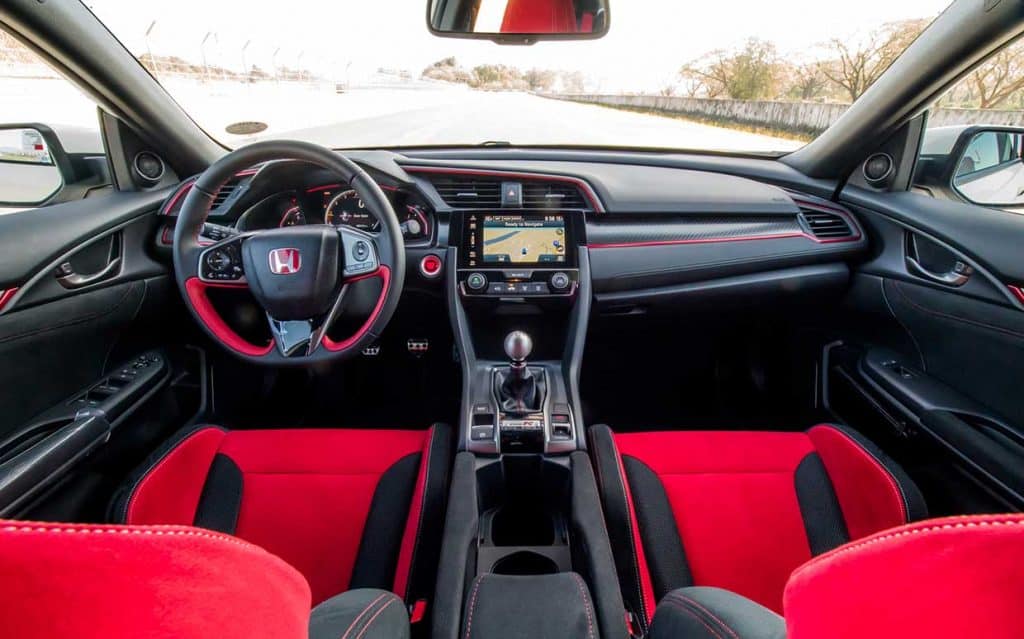
Inside, the Type R takes the Civic’s pedestrian-looking cockpit and gives it a heavy dose of sport. In this case, “R” could also mean “red” since that color is present from the steering wheel, to the dashboard, and even the seats. The front seats are super supportive, designed race-ready by Honda. It eats up a chunk of the rear passenger space, but since this is a Civic Type R, it shouldn’t matter. It’s easy to goose yourself because of the high side bolstering, but at least once you’re in, you’re in. Front and center is a digital gauge cluster akin to the regular Civic’s. It shows the same sort of practical information such as audio, navigation, and fuel consumption figures—perfect for normal daily driving, but it also shows more fun data such as turbo boost pressure, brake and throttle input, G-forces, and even a lap timer.
Shifting it into gear reminds me just how good Honda’s manual transmissions can be and the Civic Type R’s 6-speed box is an absolute joy. The aluminum shift knob feels good in hand, the clutch is light and easy to modulate, and the throws from one gear to another are short and precise. It even has automatic rev matching making me feel like a track day hero when it’s actually the car doing all the work.
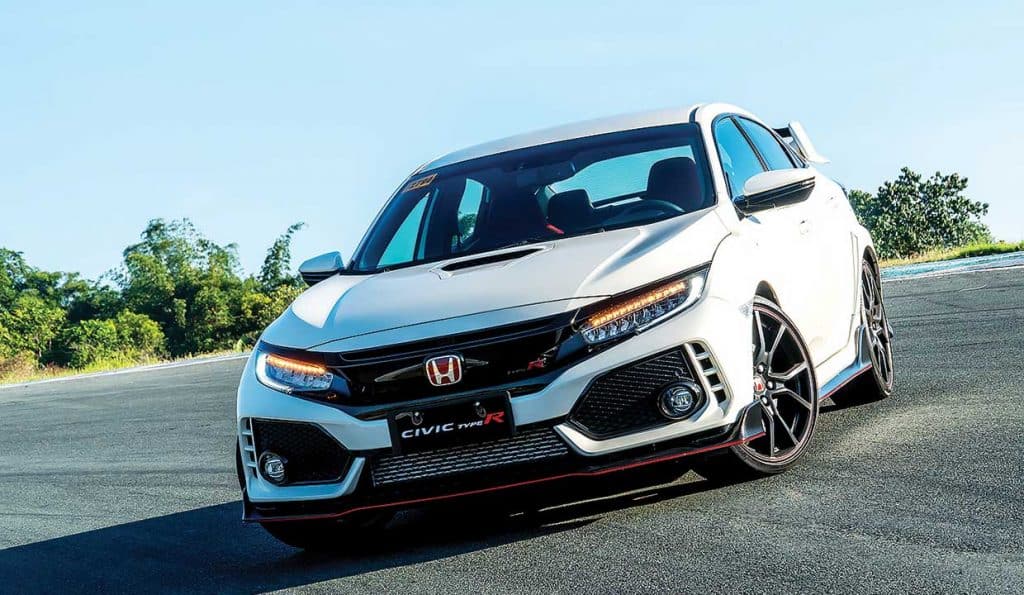
With 306 horsepower and 400 Nm of torque from a 2.0-liter turbocharged VTEC engine, it pulls quickly and smoothly all the way up to its 7,000 rpm redline. With a low-inertia turbocharger and an electric waste gate, turbo lag is imperceptible. The note is appropriately burly, too. While it sounds perfectly civilized on public roads, let it rip and sings a deep, throaty song. The trick lies in its odd-looking three-pipe center exhaust, where the middle is actually a resonator that amplifies or reduces the exhaust note depending on the amount of throttle applied.
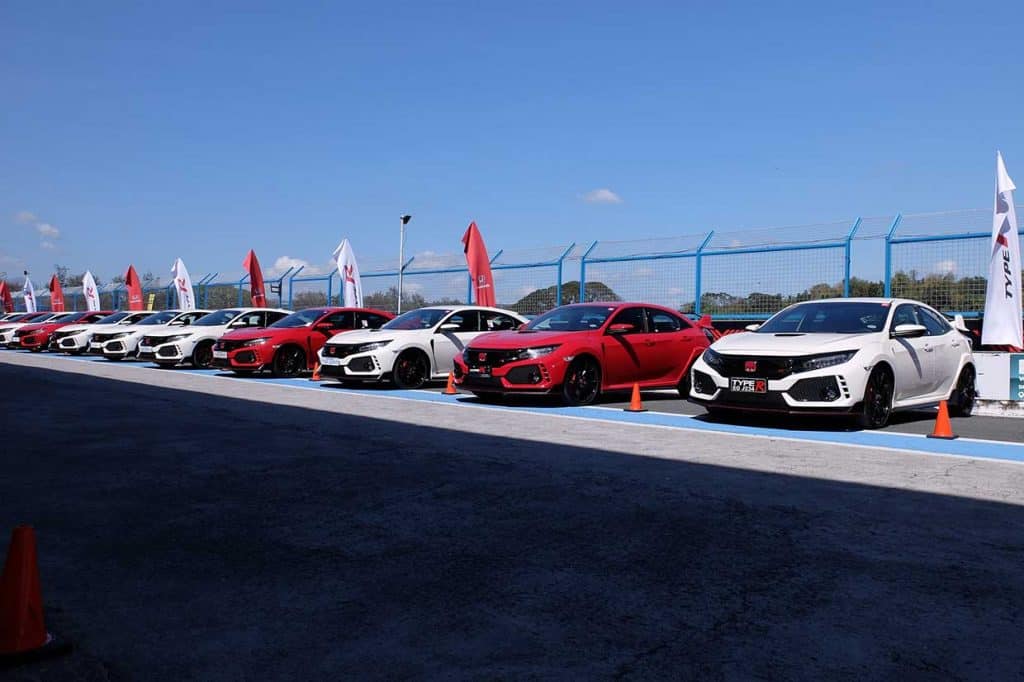
For a front-wheel drive car, it feels quick, precise, and stable. It delivers attainable performance that’s easy to master. There’s no torque steer thanks to its unique dual-axis front strut suspension and scrubbing speed is easy with its massive, fade-free 4-piston Brembo brakes. Through corners, it’s always pointable and accurate, and out of corners, the limited slip differential sorts out wheelspin as well. Even for novice track drivers such as myself, it’s easy to place the Civic Type R where I visualized it going.
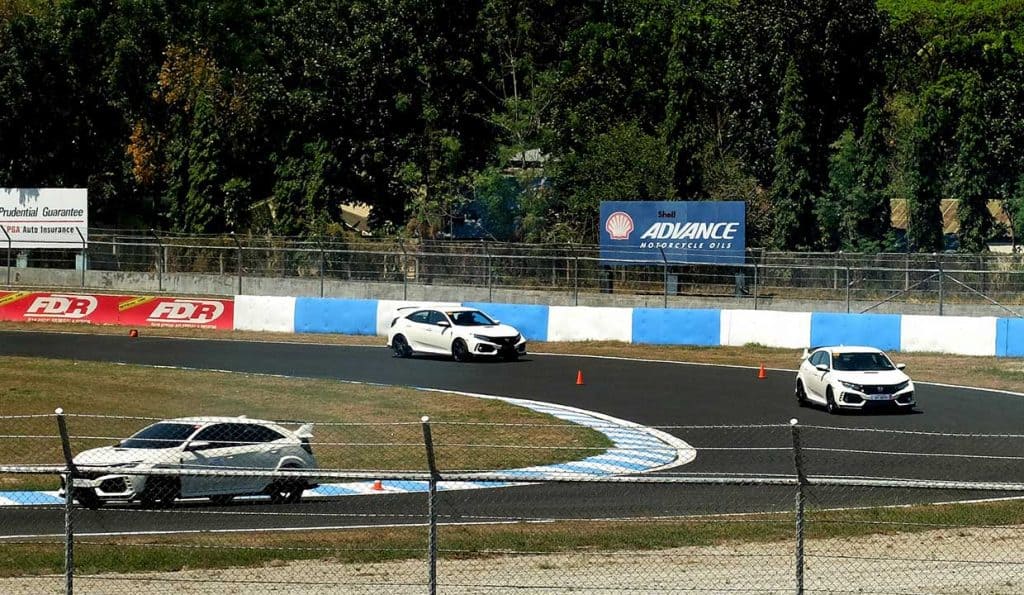
The Civic Type R has three drive modes that manage the steering force, suspension (adaptive dampers), throttle response, and even the sharpness of the rev matching. The car always defaults to Sport mode, but also offers Comfort mode for more relaxed driving, as well as +R for track use. Honda says this should provide drivers a range of flexibility—making it an equally good track day weapon as it is a grocery getter. However, since there wasn’t any chance to sample how the 30-series, 20-inch tires would behave on our pockmarked roads, it’s best to reserve judgement at a later time.
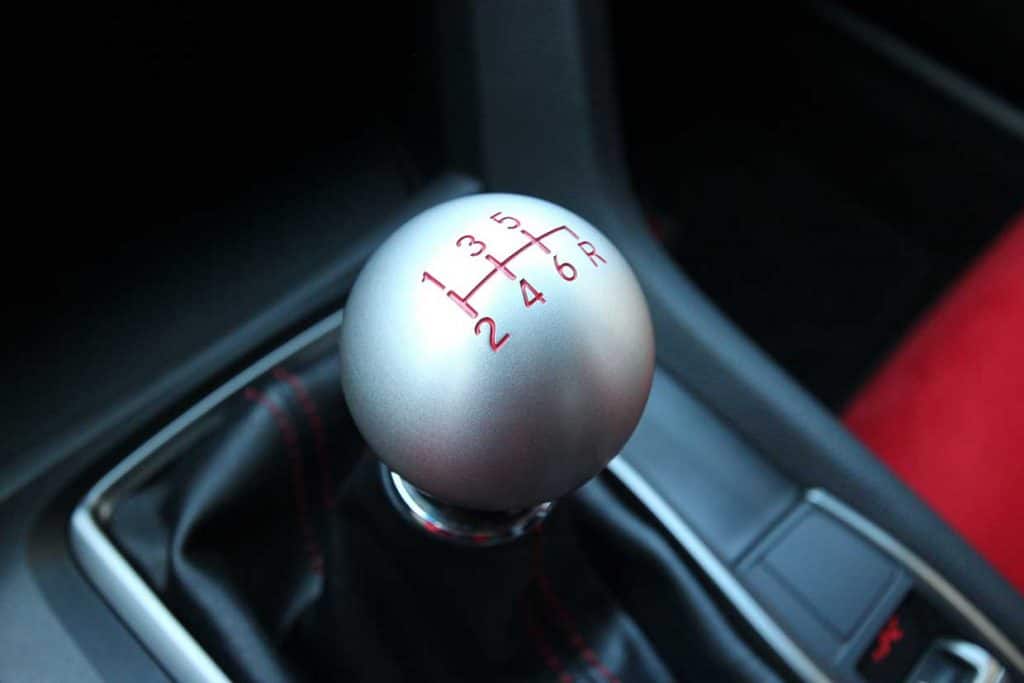
Overall, if I were to use an analogy to compare the Civic Type R to its chief competitor, I would look at it this way: if lapping a circuit was like driving a nail down a piece of wood, its rival would be a sledgehammer. It would always bludgeon its way through. It’ll get the job done, but it’s raw, brutal, and tiring. It’s ancient and inefficient. On the other hand, the Civic Type R is more of a pneumatic nail gun. One small click and it’ll drive the nail through each and every time. No fuss, no hassle. It definitely feels like the modern-day track hero who will always get things done effortlessly.
Twenty years is a long time to suffer from blue balls. And after counting the years with all my fingers and toes, I was ready to give up, give up the dream of savoring a Honda Civic Type R in a local setting. Thankfully, when I was just about to run out of digits, I’ve finally gotten my release. I drove Honda’s legendary track weapon and it was every bit as good as I imagined it to be.
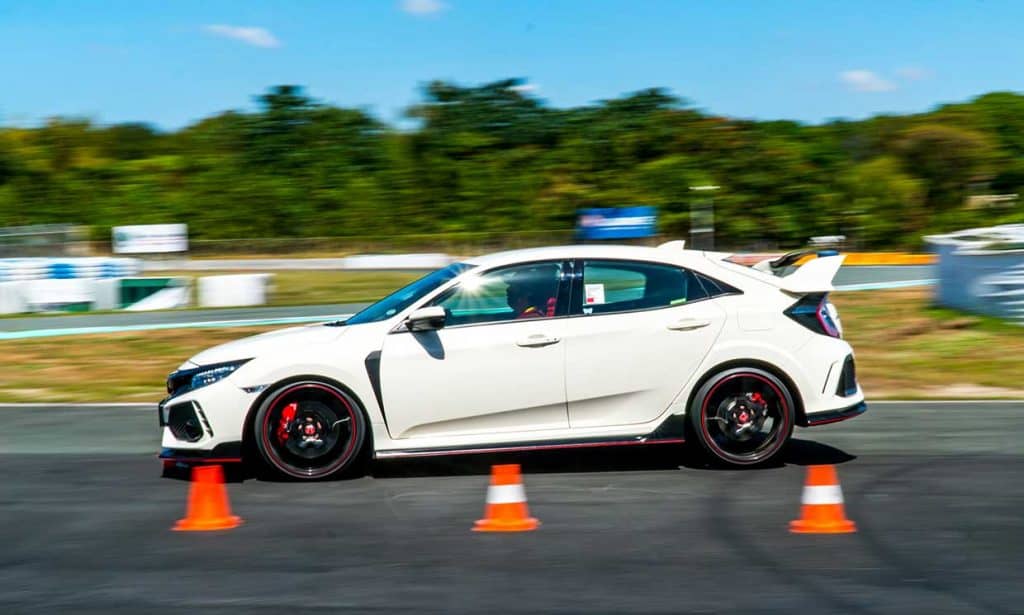
Thanks to the overwhelming response of car enthusiasts to the Civic Type R, Honda Cars Philippines President and General Manager Noriyuki Takakura has confirmed that they are in the process of bringing in another batch of the Civic Type R within the year. Exact timing and pricing will be announced at a later date.

